Speech therapy exercises for children will help develop correct speech the most important form of communication. The child learns to speak by listening to the speech of adults. Articulation is provided by the folded work of the muscles of the tongue, pharynx, larynx, palate, and respiratory muscles. Hearing impairments, even minimal ones, can complicate this process.
By the age of 4-5, most children develop a fairly correct, clear pronunciation, and less and less words are observed. By the end of the fifth year, the child is most often able to pronounce all the sounds of his language, although sometimes there are difficulties with hissing and "r". But some babies have difficulty pronouncing certain sounds. Parents are worried about how to help the baby, and whether everything can go without intervention. Unfortunately, this usually does not happen, special classes are needed.
Effective exercises for setting the sound "r"
The font she is designing will not only be available to people with this problem, but she hopes it will be used to print books as well as to design textbooks. When should speech therapy be started in children? Generally speaking, if the parents are not sure whether the development of speech will proceed without disturbance. A one-time exam determines the level of speech development and possible trends in further education, and may be the only one if everything is ok.
The initiation of care for individual disorders is individual - if the child does not begin to speak on time, it is recommended to consult a third year ago. For preschool stuttering, consultation usually takes less than a month unless the disorder resolves spontaneously. If a speech groups are more or less understood, speech therapy care can be started much earlier - developmental dysplasia may also be involved and a differential diagnosis is needed. Initially, it is always about maintaining and developing basic sensory abilities and dexterity, as well as looking for the causes of developmental differences.
Baby development from infancy
To avoid problems with speech, it is important to develop the baby's fine motor skills from the first months. The parts of the brain that are responsible for these functions are located quite close and are closely interconnected. Various positively affect how the child will speak.
It is useful to massage the fingers and palms, to offer objects for study that differ in materials and textures. Good for development is joint drawing, including finger paints, or dough, stringing beads, puzzles, mosaics, various lacing, designers. Also great importance has communication between the elders and the baby. It is important from the first weeks of life to talk with him, to tell poems and fairy tales, to pronounce your actions.
Logopedic work with children
If a speech disorder is suspected due to an illness or malfunction, speech therapy usually begins as soon as the error is discovered, in parallel with medical assistance. At the first stages we are talking about monitoring development and counseling parents, gradually increasing the elements of therapy gradually. Other failures work as needed, mostly in a team of other experts.
How often do you go to speech therapy?
The interval between visits is individual - from daily visits to complex treatment of stuttering for several months in control after treatment. Weekly intensive training is also common, for example, for a dysfunctional preschooler. The most frequent visits are every 3 weeks to a month if care starts on time. Very few children are no exception or longer intervals. The frequency of visits is entirely within the competence of the speech therapist, who is individually adjusted according to the current situation and needs.
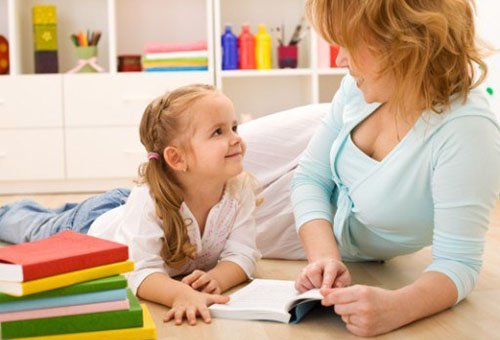
How to start speech therapy exercises?
In order to correct the speech disorders of the crumbs of 4-5 years old, it is necessary to start by determining which sounds the baby cannot pronounce. To do this, it is necessary to consistently show him pictures so that the child calls words. The desired sound should be in different parts of the word: at the beginning, middle, end. Once the problematic sounds are identified, you can start working on them. This should be done with each one separately, from easy to more difficult.
My son is 3 years old and talks to the doctor on average
You probably don't need anything - try talking to him about books and playing with him. Limit TV viewing for short periods in favor of active gaming. The development of speech is also important at this age for the development of dexterity, for the promotion of speaking skills and the quality of sensory perception, especially for hearing. See if the vocabulary is constantly changing and if the boys understand the appropriate age. If you are unsure, agree to a one-time speech therapy consultation.
High-quality warm-up for lips and tongue
A remark with words without your presence during the training, without explaining the procedures and possibilities of children's motivation, cannot be considered speech therapy help. The repetition of words will not solve anything if the very nature of nature does not work, who can no longer look at it. Find a place in a speech therapy workplace where they will conduct comprehensive examinations and advise you individually on the appropriate teaching methods to practice at home, as well as the appropriate motivation, depending on the situation and the age of the child.
In order for a child of 4-5 years old to learn to speak correctly, you first need to work on the pronunciation of individual sounds, not words. It is important to correctly explain to the baby how the tongue and lips should be located. It will be easier for him to understand and follow instructions if they are given in game form. After the crumbs succeed, it is necessary to introduce the learned sound into everyday speech. This process is often slow and can take more than one month. At the same time, you should start working on the next sound.
We try to train regularly, but the situation does not change
Of course, you can change the workplace, the jurisdiction of the place of residence ceases to apply. Long-term mechanical repetition of a wordless group of words is not okay - but let the situation first explain and ask everything you care about.
Write me some steps to teach my son to speak correctly
It would be so simple that the procedures could be summarized in a few lines. The reason may be silence, lack of coordination of movement, weakening of the imitation reflex, inaccurate sensory perception, etc. little, but persistent exercises and games can solve it.
Classes must begin with a special warm-up for the tongue and lips. They do it while sitting, in this position the child's back is straightened, and the body is relaxed. It is important that he sees the face of an adult and his own face. So he can control the correct execution. Therefore, you need to charge in front of a mirror of sufficient size.
Five year old son started sneaking, what should I do?
If the voice is greater, ask speech therapy immediately to find out the reasons and re-education to finish by going to school. In a situation where a child has problems, he helps to give us a whisper from the first time what he wants to say. In addition, in poems, songs and poems, fluency remains free, offer this activity as often as possible. Try to keep even the most ordinary day mode for a while, skip all the adrenaline entertainment and addictive reading, minimize your outdoor TV viewing.
After the correct place is chosen, the adult, using game techniques, tells what exercise will need to be done now. Then he shows it, and the kid repeats. An adult controls the process, if necessary, helps with a small spoon, clean finger or other object.
Exercises can be:
- stretch your lips in a smile, while your teeth are hidden;
- extend lips in the form of a proboscis;
- raise with clenched jaws upper lip;
- do rotational movements lips extended into a tube;
- stretch out your lips, clasp them with your fingers, massaging at the same time;
- inflate first two cheeks, then each separately, draw in the cheeks;
- open your mouth, lick your lips in a circular motion;
- stick out your tongue, stretch it up and down, while it should be tense;
- with the mouth open, press the tongue against the palate and pull the lower jaw down.
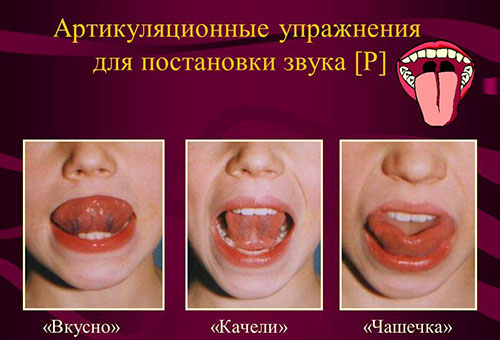
Try also to think about whether there is something going on in the child's immediate environment that will burden him/her. In more young age it is also a very rapid, rapid development of speech. If the risk conditions are greater, the likelihood of fluency increases. Some children have a congenital disorder in addition to this disorder. If you can eliminate the likely cause, you can wait a maximum of 3-4 weeks if the humidity levels gradually improve. If not, or you may think that there are several possible causes, it is more reasonable to assess the situation individually for speech therapy.
After the gymnastics is completed, you can proceed to the production of sounds. As a rule, most often problems arise with "r". Very many peanuts cannot cope with this on their own and up to 5-6 years. Most often, children either skip this sound or replace it with another. Therefore, parents should help them, for this there are special speech therapy techniques.
The first steps to handle a situation are simple and game-like, others are classified according to the situation. Good cooperation with the family and patience are always needed. We find it difficult to write in class 2 in class - scratches, missing marks and dictates not what we can do. Reasons can range from immaturity nervous system to partial skills that are not at a sufficient level before the learning disorder. The first is a consultation with a classroom teacher, usually followed by an educational psychological consultation or speech therapy, where the necessary skills can be developed to the required level through various games and training programs.
Although parents can do most of the exercises themselves with their child, consultation with a speech therapist is desirable. Often, problems with speech, and especially with this sound, in children of 4 and 5 years old arise for physiological reasons. For example, the case may be in an underdeveloped frenulum, due to which the tongue does not reach the palate. This can only be determined by a specialist, he will also give recommendations to correct the situation: he will prescribe massages or surgery.
What are the possibilities of speech therapy for adults?
You should also take into account the fact that not all children may have the same number. Speech defects can be changed at any age, as long as they are interested in an adult and are willing to work as instructed. Success depends on the type of disorder, the persistence of the client, and the procedures chosen. The work is somewhat different from the procedures in children - motivation, vocabulary or manuals, but especially in terms of explaining the purpose of individual exercises. Usually at least a state of improvement can be achieved, but only in exceptional cases the situation cannot be changed.
To check how the baby copes with this difficult sound, you should ask him to growl, then pronounce words in which “r” is present. If he does not get a single sound, then you need to put it. If the problem occurs only with whole words, then work out the syllables. For some exercises, a special spatula is used, which can be bought in specialized stores. They should act carefully, but confidently.
Husband had a stroke and had difficulty speaking
See a GP, contact your doctor or the workplace where you are going. A comprehensive speech exam will show which elements need to be improved and which methods to use. There may be shortcomings in the mobility of speakers or in the coordination of their movements, in understanding speech, in memory of words, etc. it also depends on the location of the disease and its degree. Therefore, we cannot give you a simple recipe in this way. Speech therapy should be started as soon as possible.
Dyslalia, or patriotism, is the most common speech disorder not only in children but also in adults. This is the wrong voice. The utterance of one or more sounds is disturbed by dysplasia. It is very important to keep in mind that each period corresponds to the pronunciation of certain voices. These sounds are artificially required, and therefore most children at this age do not succeed, which is completely natural. For your orientation, we offer short review development of the pronunciation of individual voices.
Classes often consist of a series of exercises.
- The kid, opening his mouth and pressing his tongue to the place where the upper teeth grow, quickly pronounces “d” several times in a row. Then he does the same, blowing on the tip of his tongue. So he can remember the vibration that accompanies the "r".
- The baby, opening his mouth wide, should pronounce "g". In this case, the tongue must be slowly raised to the upper teeth. After that, the adult gently inserts the spatula under the tongue and moves it in one direction and the other, creating vibration. The baby should blow at this time.
- The child pronounces the syllable "for", pulling the tongue as far back as possible. If at this time to introduce a spatula and make rhythmic movements to the sides, then you can hear a clear sound "p".
- For a softer “p”, the previous exercise is repeated, only the baby at the same time sentences the syllable “for”.
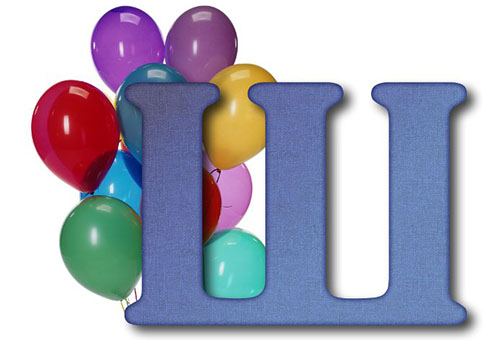
Experts will help you
You should always remember that every child is unique and develops individually. It is very important to respect the natural development of your child's articulation and not demand performance for which she is not yet mature enough. According to the table, you can estimate the right time for an early visit to the speech therapy ambulance. Generally speaking, the practice of correct pronunciation can be started during the fourth year. Detailed description development of articulation in accordance with the age of the child.
Exercises for setting hissing
The sibilants start betting with "sh", on the basis of which in the future it turns out "w". To do this, the child pronounces the syllable "sa", smoothly raising the tongue to the base of the teeth. When a hiss occurs, an adult helps to remember this moment with the help of a mirror. Then the baby blows and adds “a” to the exhalation, so that the syllable “sha” is obtained.
It may happen that the child no longer wants to communicate with you, he will not like to talk.
- Incorrect speech pattern is very important environment in which your child grows up.
- The child can seal the same voice as another member of your family.
- It is also important that your speech is not too "pleasant", "sly", for the child.
- Lack of expressed emotions.
The child pronounces “sa”, and the adult sets the tongue to the desired position with a spatula. After several trials, he checks whether the baby himself can put the tongue correctly. After mastering this sound, you can learn "zh", including the voice during pronunciation.
To put "u", usually use "s". The child pronounces "si", stretching out the hissing component, and the adult moves the tongue back with a spatula, lifting it. The sound "h" is put through "t", the syllable can be both direct and reverse. The kid pronounces it with a noticeable exhalation on a consonant. An adult with a spatula pushes the tip of the tongue back.
Therapy must respect certain principles. When you see that the child is tired, his attention drops, stops practicing and allows him to play, draw or do what he likes and enjoys. If your time options allow you to exercise with your child at least twice a day. Whenever a child learns to voice, a so-called voice announcement is used during the training. So the child is always learning new pattern vocal articulation and thereby better abandons its original orthographic translation. The approach to each child should be individual! Children often try to pronounce new voice again and again. So train calmly, without much effort.
- Practice with your child several times a day at short intervals.
- Children preschool age will be watching them very closely.
- Therefore, practice with your child for a maximum of 5 minutes.
Children love to imitate adults, so the elders must show how to do the exercises correctly. The kid should see the adult's face, facial expressions and lip movements. For a child of 4 or 5 years old, it is important that it is interesting to study. Parents should diversify classes, supplement them with elements fun game. For the crumbs, speech exercises are a lot of work. And if it brings pleasure and positive emotions, then it will be much easier to achieve success.
It is a mistake to think that if your child manages to pronounce the sound correctly, he will start using it right away. You should always count on that. Language and lip exercises are important, then we can start with the sound of sound after sound, we must correct it by syllables and words, if the child can pronounce the words correctly in words, we can switch to speech automation in general speech. The course and duration of the individual stages are very individual, so you need to be patient and patient!
Speech therapy can take several months, sometimes several years. Ever since she dropped her top, she started talking bad. So please extract the file or email it. Do you live abroad and do not have the opportunity to contact a Czech speech therapist? Isn't that your advice in online counseling? Are you not sure if you are training at home? Can't you run login for any other reason?
Today, many parents who care about the comprehensive development of the baby know that the formation of the skill of literate writing and reading contributes to normal speech development child. Before the start of classes, it is necessary to conduct a survey of the baby's speech, to find all the shortcomings in pronunciation.

What is the characteristic of a child of this age:
- By the age of 5, the baby should master all the sounds of speech, with the exception of hissing sounds and “P”, sometimes the sound “L”, which the child can still pronounce poorly
- The child in the lexicon should have a sufficient vocabulary so that he can make a sentence of 5-7 words.
- The child should be able to use words in the singular and plural.
- The kid should be able to describe any object, indicating its qualities.
- The ability to conduct a dialogue is another of the norms characteristic of children of this age. When communicating with an adult, his speech should be understandable, not only to parents, but also to strangers.
- The child should quickly give his name, surname, age, names of parents, nicknames of animals that live nearby.
If the child does not know how to do any of the above, it will be useful for him to attend speech therapy classes. They will be used to develop fine motor skills, enrichment vocabulary, the development of an air jet and, of course, the correction of a violation of sound pronunciation.
In private speech therapy centers, consultations and classes are conducted by a speech therapist. However, his work is not cheap. But parents who have the opportunity to study at home with their baby will be able to spend this time usefully. Moreover, in a relaxed home environment, the child feels more comfortable: there is no undue stress from communicating with a stranger.
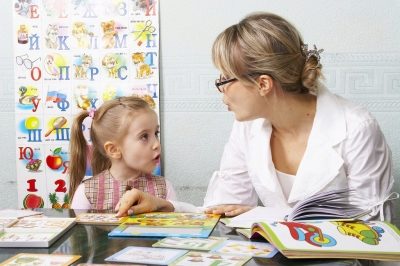
Speech therapy classes at home
Various literature comes to the aid of mothers.
One of the benefits that you can use at home is "Speech therapy homework for children with ONR for 5-7 years" Teremkova N.E. These tasks can be offered to a child and under the age of 5 years.
We suggest using the benefits of two more authors - these are Bardysheva T.Yu. and Monosova E.N. They offer educators and parents a large number of benefits designed for the development of children from the age of 3.
In order for homework to be successful, you need to follow some rules:
- All classes must be carried out in a playful way so that the child is carried away by everything that happens, and also does not understand the true meaning of the exercises.
- Classes should be limited in time. To begin with, it is 3-5 minutes, then bring it up to 15-20.
- Quantity gaming activities about 2-3 per day, so the material will be absorbed faster.
- Praise your child for every success, support with kind words. Do not use the word "wrong" - the child may withdraw and no longer make contact.
- Classes are best done during hours when the child is not tired. Best time for this - after breakfast and after daytime sleep.
- When talking to the child, turn to face him, clearly pronounce all the sounds. Remember, you are a role model.
- If, while completing a task, you get acquainted with certain natural phenomena, you must do this at the time for which these phenomena are characteristic (in winter - the study of winter phenomena, in summer - summer ones).
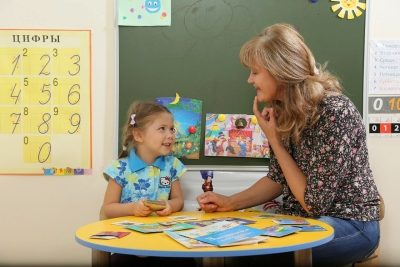
Stages of homework
Let's clarify the procedure for conducting classes at home:
- Finger gymnastics.
- Gymnastics for organs of articulation.
- Games for onomatopoeia, hearing development, logorhythmics.
- Speech development, vocabulary replenishment.
Consider in order each stage of training at home.
Gymnastics for fingers
It is known that there is a strong relationship between the human hand and the brain. Therefore, by performing small hand movements, we thereby train the areas of the cerebral cortex. Well, if these movements are combined with speech, then the benefits of such exercises will be much greater.
Parents, doing finger gymnastics with their baby, should not just ask to perform any actions, but learn and repeat short rhymes, sayings, songs with the child.

There are a lot of options for finger exercises. In bookstores you can find a large amount of literature with whole sets of exercises for the development of motor skills. Any mother can use these publications.
In general, there are a number of movements that contribute to the development of fine motor skills:
- stroking one palm with the other;
- massage of the fingers of one hand with the other hand;
- combination thumb hands with other fingers;
- combining the fingers of two pens with each other.
Playing with a “magic bag” in which mom pours cereal is of great benefit. Each bag can contain either one type of cereal or a different one. Commonly used buckwheat, peas, beans, rice.
The child is asked to touch small and large inclusions with his fingers. Another option for using cereals: just mix in a bowl different types and ask the baby to sort it out.
The main exercises are shown in this video:
Articulation gymnastics
These exercises are aimed at strengthening the muscles of the articulatory apparatus, developing the range of motion. Any subsequent production of sounds is preceded by articulation exercises.
Exercises are divided into dynamic and static. When performing the first tongue, the lips perform some kind of exercise, that is, they constantly move. When performing the latter, the organs of articulation must "take" a certain position and hold it for several seconds. Such exercises are more difficult for the baby, it is important to teach the child to do this.
There are exercises that can be done always and for all kids. They simply contribute to the development of movements of all the muscles of the apparatus.
There are exercises that "prepare" those muscles necessary for pronouncing the sound that the child does not pronounce well.
Among the exercises are the following:
- on the development and strengthening of the muscles of the tongue;
- on the development and strengthening of the muscles of the lips;
- on the development and strengthening of the muscles of the cheeks;
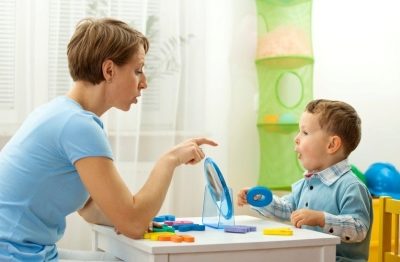
Here are some of these exercises:
"Smile". Strongly stretch the lips in a smile, but the teeth should not be visible. Hold a smile for 30 seconds.
"Fence". Smile strongly so that the teeth are visible, keep the smile.
"We will punish the naughty tongue." Slightly open your mouth, put the tongue on the lower lip and, slapping your lips on it, pronounce "five-five-five ...".
"Tube". Open your mouth, stick out the tongue and try to bend its side edges up in the form of a tube, hold it in this position for 30 seconds.

"Let's lick the jam." Slowly, without tearing off the tongue, first lick the upper lip from corner to corner, then repeat the procedure with the lower lip.
"The clock is tick-tock." Make a smile, open your mouth, then alternately touch the corners of your mouth with the tip of your tongue.
"Brushing our teeth." Smile, open your mouth, then with the tip of your tongue, pressing it hard enough, we clean the inside of the teeth of the lower row (7-10 times). Repeat the same exercise with the teeth of the upper row (7-10 times).
"Swing". Smile and open your mouth wide. Then lower the tip of the tongue for the lower row of teeth by “one”, and raise it by the upper one by “two”. Repeat - 4-5 times.
It is better to perform exercises not just on demand. Get your kid interested. Invite him to take a trip to magical land, where main character- tongue. Dream together, and these activities will bring many benefits to the child.
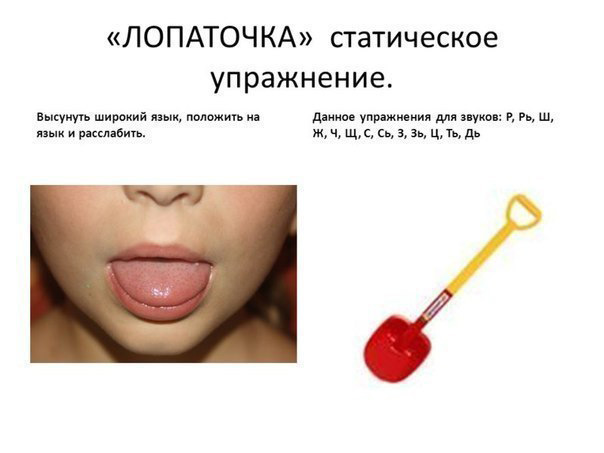
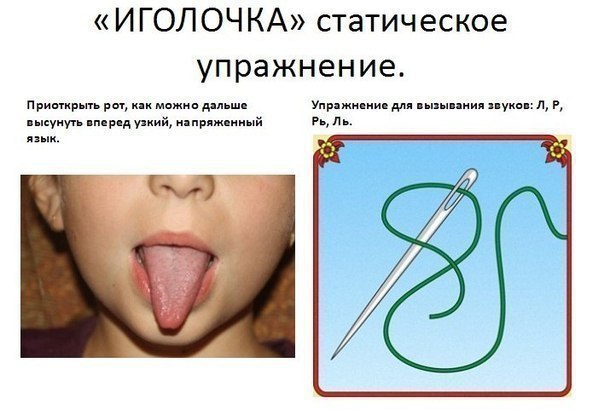

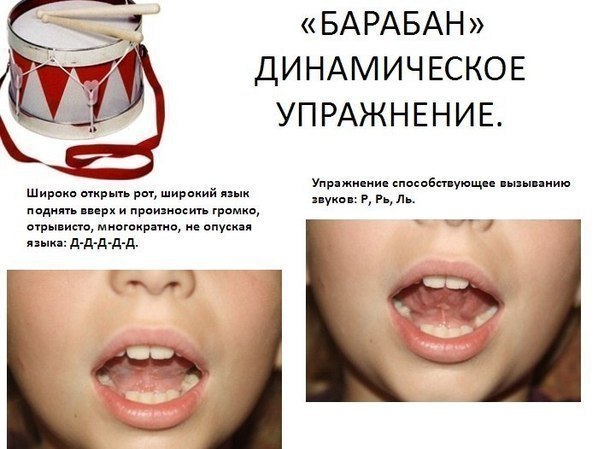
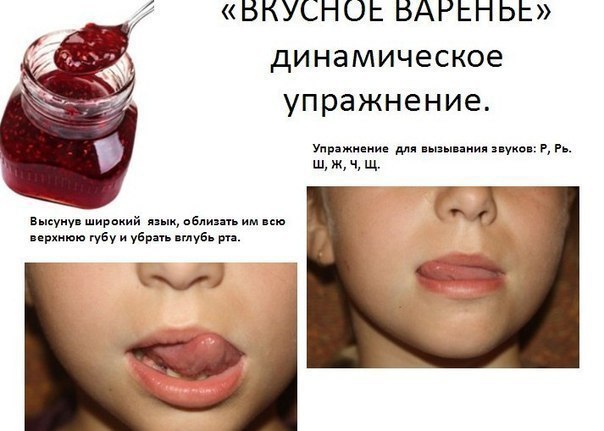
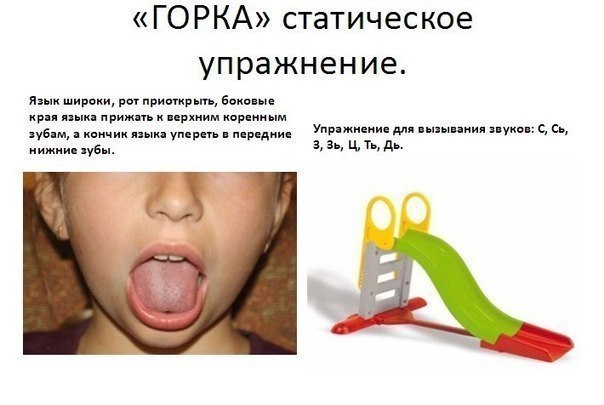
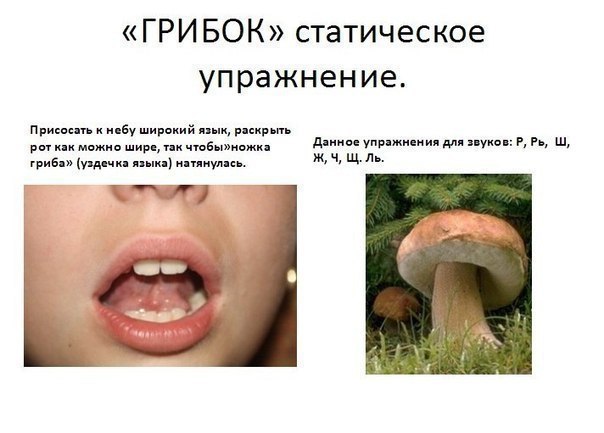
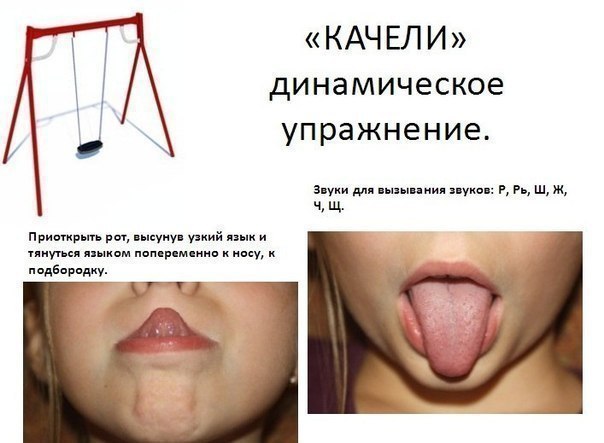
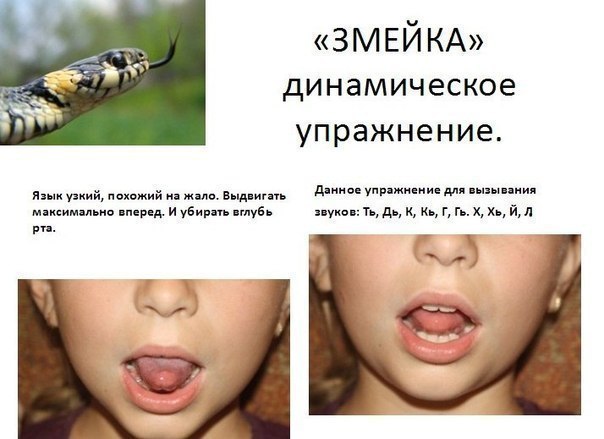
Do not forget that all exercises for the development of organs of articulation must be performed in front of a mirror. The child should not only feel where the tongue is and what the sponges are doing, but also see it all.
Basic exercises are shown in the following videos.
Development of phonemic hearing
Since the child does not learn speech on its own, but by perceiving sounds from others, it is necessary that people living nearby speak correctly.
In addition, the surrounding people at the stage of development of a child's speech can play a huge role in its formation. Many activities for the development of hearing are based precisely on onomatopoeia.

Consider what exercises you can do with your baby at home:
- Guess which object is ringing. An adult invites the child to consider objects that can make a sound. Shows how they sound. Then he hides behind his back an object that makes a sound (drum, spoon, glass), and asks the child to guess what is ringing.
- Guess where the sound is. An adult behind the child moves around the room and rings a bell in different places. The child must show with his hand the place where he hears the ringing.
- Imitation of the sounds that animals make. To perform this exercise, it is desirable to use plot and subject pictures. You can consider the little animal, discuss how and where it lives. And say the sound she makes. (Frog, bee, cat, etc.)
- Imitation of everyday sounds. The exercise is based on the repetition of sounds that we hear from various items. (water drips: KAP-KAP, train rides: TU-TU, etc.)
Logo-rhythmic exercises play an important role in the development of hearing and sense of rhythm. These are exercises that combine movement, speech and music. This type of activity is very popular with the child. An adult shows the child movements and pronounces words, all this is done to well-chosen music. The main thing in this is to prepare in advance. After all, how will the lesson be interesting if an adult constantly makes mistakes in words? ..

Speech development
Work on the development of a child's speech includes two areas:
- Vocabulary work, where the child clarifies the idea of the surrounding world of objects and phenomena, the relationship of people.
- The development of the grammatical structure of the language - the child learns to use words in the correct form, correctly compose sentences.
Vocabulary solves the following tasks:
- clarifying the understanding of the words in the child's vocabulary;
- enrichment of the lexicon with new words;
- formation of skills of using new words in independent speech.

The child masters the world, and in order for this work to be interesting and useful to him, it is necessary to use building kits, toys, children's books, subject and plot pictures.
I would like to recommend the demonstration material developed by the authors Olga Gromova and Galina Solomatina for use in home speech development classes. It is presented with pictures with clear and bright illustrations that will be understandable and interesting for children.
Do not forget, when working with a picture, it is necessary to put the question correctly so that the baby can find words to indicate the quality of the subject.
It is important to understand that speech given word may or may not be used. To this end, new words must be repeated in combination with other familiar words. For example, when reading Surikov's poem "Winter", the child is asked to think about what else can be called the word "fluffy": a kitten, a towel. Repeating it in combination with familiar words, the child begins to use it in independent speech.

The material you will work with must be appropriate for the age of the child. For a 4-year-old, there may be fairy tales “Ryaba Hen”, “Gingerbread Man” and others. A fairy tale induces sympathy for everything good, it is necessary both for the development of speech and for moral education.
Reading fairy tales should be accompanied by the display of vivid illustrations. It is good to reinforce what you read with a beautiful cartoon. This will deepen the impression of the fairy tale.
At the age of five, a child can be offered to compare the features of objects, generalize (vegetables, fruits), make sentences using key words (girl, forest, basket). The fixing of the material takes place in didactic games Proverbs and tongue twisters are of great help in this.
Here is a sample list of topics that are offered to the child:"Parts of the human body", "Clothes", "Seasons", "Vegetables, fruits and berries", "House and its parts", "Furniture", "Animals", "Transport" and others.
The development of the grammatical structure of speech occurs with the enrichment and activation of the dictionary, the formation of coherent speech. Most often, children have errors in changing nouns by cases and by numbers (no boots, pencils, kittens, caterpillars). These difficulties must be taken into account when individual lessons with baby.
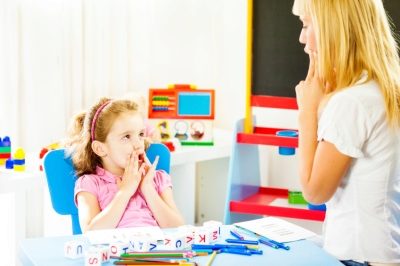
Here are some types of exercises that are carried out with the child:“One - many” (hand-hands), “What will I show?” (Flowers, lamp) “To whom - what? (a bone to a dog), “Who eats what?” (cow - grass), “Call it affectionately” (cat - cat, ring - ring), “Divide the word into two” (airplane - it flies itself), “Who is this and what?” (apple is round, sweet), “Whose part is this?” (the fox's tail is a fox's tail), "Yesterday - now" (yesterday I went to the park, now I'm playing with a doll) and others.
Today, on the shelves of stores you can find a large amount of literature, which describes in detail the exercises and activities for the development of coherent speech of the baby, which can be used at home.
Do not forget, the child is growing and will soon go to first grade. And the success of schooling depends on how well his speech is formed. The period from 4 to 7 years is the most favorable for the development and correction of speech.
Give your baby as much time as possible at this stage of development, and you will thereby lay a solid foundation for the future success of the child.
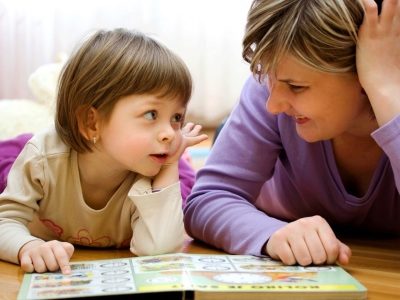
You can see an example of a speech therapy lesson in the following video.
